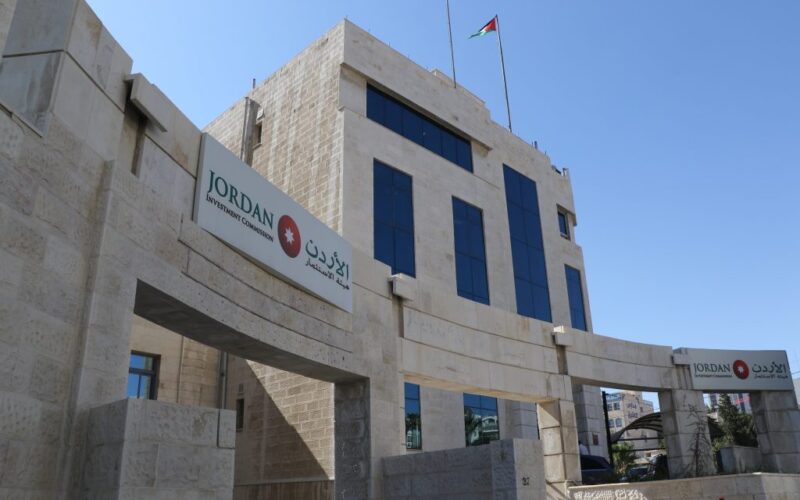EOB – Jordan has attracted more than USD 9 billion (JOD 6.39 billion) in Private-Public Partnership (PPP) investments since 2004, of which USD 4.79 billion (JOD 3.4 billion) went into the energy sector. In addition to recently signed projects, at a combined value in excess of USD 8 billion (JOD 5.68 billion), since December 2022.
In March 2023, the government approved the Executive Programme for Economic Modernisation (2023-2025), the strategic objectives of which are to raise annual income per capita by 3% and create new jobs.
This programme is a framework for the execution of the Economic Modernisation Vision, which outlines several PPP projects at the estimated value of USD 14.08 billion (JOD 10 billion) in various sectors. Such sectors include water desalination, schools, clean energy, transportation, and infrastructure.
Overall, the economic modernisation vision aims to attract USD 41 billion (JOD 29.1 billion) in investment in the next 10 years.
However, PPP projects have relatively long cycles, from tendering and initiation to financial closure. According to Iyad Dahiyat, former secretary general of the Ministry of Water and Irrigation, the PPP cycles in Jordan average around 3 years.
This, considering implementation durations, could delay the realisation of the government’s PPP goals for 2023-2025, let alone the vision’s 10-year timeline.
That said, this also means that the agreements signed in December 2022 are likely to materialise within the next 2-3 years if all goes to plan. This helps the government realize their goals.
On the other hand, the European Bank for Reconstruction and Development assessed Jordan’s PPP effectiveness and bankability in 2018 at 60% and 67%, respectively. This may affect the attractiveness of Jordan’s economy to foreign investment.
Progress in 2023
In a statement to the Jordan News Agency (Petra), Chairman of the Jordan Economic Forum’s Board of Directors and Member of Parliament (MP), Khair Abu Saalik, said that the government has already made progress in terms of initiating new PPP projects.
A number of agreements were signed in December 2022 to initiate the green hydrogen and ammonia projects, estimated at a value of USD 5.63 billion (JOD 4 billion), and the national water desalination project, at a value of USD 2.82 billion (JOD 2 billion), he added.
Looking forward, there are more major investment projects underway, reports indicate, the signing of which is to be expected soon, in 2023.
Such projects include the development and management of the King Hussein International Airport, the multi-purpose port, and the tourist seaport, at a combined value of USD 225.32 million (JOD 160 million).
So far, the government has secured USD 8.675 billion (JOD 6.16 billion) out of the 10-year target of USD 41 billion (JOD 29.1 billion); i.e. 21.1%, factoring in the agreements signed in December last year.
Notably, since the PPP cycle in Jordan takes a relatively long time, the agreements signed in December last year will likely come to fruition within the timeline of the economic modernisation executive programme.
By any measure, achieving +20% of a 10-year target within months of announcing the programme is an outstanding achievement, especially in light of the tenders currently floated for mineral exploration in Jordan.
As to whether or not the government has the stamina and coordination to maintain this pace is an entirely different question.
Over the past 30 years, the one thing Jordan’s many consecutive governments have been consistent on has been privatization.
Sector overview
As of 2021, the government has 22 state-owned enterprises (SOEs) of different sizes and mandates that are fully owned by the government, employing around 11,000 people, with assets in excess of USD 8 billion (JOD 5.68 billion). The government’s partially owned SOEs, with equity greater than 50%, employ around 4,000 individuals, with total assets of USD 1.3 billion (JOD 920 million).
Officially, the government of Jordan launched the PPP project in 2008. But the Amman Stock Exchange (ASE)’s Privatization in Jordan Report shows that large-scale privatization efforts have been ongoing since 1996.
Before 1995, the government’s shares in public shareholding companies averaged 15%, through the Jordan Investment Corporation’s portfolio.
Since then, the government’s shares through the corporation’s portfolio have dropped to around 6%, with most of its remaining shares vested in the Arab Potash, Jordan Phosphate Mines, Jordan Cement Factories and Jordan Petroleum Refinery companies.
By 2015, nearly a third of the government investment portfolio had been procured through PPPs, as explained by public sector investment expert Hamzeh Alayani, in a Jordan News article published, in August 2022.
In comparison, the average of procured public sector investment portfolios in emerging economies worldwide, according to the International Monetary Fund (IMF), stands at 6%, Alayani underscored. Whereas Jordan’s PPP capital stock was estimated to exceed 22% of the country’s Gross Domestic Product (GDP), he added.
Moving forward
If anything, all of the above indicates that the government in Jordan may very well be able to keep pace and exceed the 10-year investment and PPP targets of the economic modernisation vision and its executive programme.
Notwithstanding, achieving these goals, in the long run, could require a variety of macro and microeconomic and legal framework adjustments (or “reforms” as the government and international organizations call them).
The European Bank’s assessment of Jordan’s PPP legal framework and business environment scored 72% and 64% in 2018, respectively.
Since then, however, Jordan has introduced new PPP laws and policies.
These recently signed and upcoming projects along the government’s pipelines will put the new legislation and legal frameworks to the test.
Meanwhile, Jordan’s bankability of PPP projects could be improved by providing for “direct agreements” and “step-in” rights, according to the European Bank’s review.
Despite the difficulties currently facing Jordan’s PPP sector, the government’s investment goals and the progress accomplished so far are commendable.
With more investment projects expected in the future, the country’s PPP market is poised for further growth.
However, the success of the government’s economic modernisation vision ultimately depends on its ability to address the challenges facing the sector and maintain the current pace of progress. If it can do so, Jordan’s PPP market could become an increasingly attractive destination for both local and foreign investors in the years to come.
Eventually, the government’s aim for economic modernization ultimately hinges on its capacity to resolve as many of the sector’s issues as soon as possible, while keeping the current pace. If it succeeds in doing so, the PPP market in Jordan may attract more and more domestic and international investors in the years to come.










